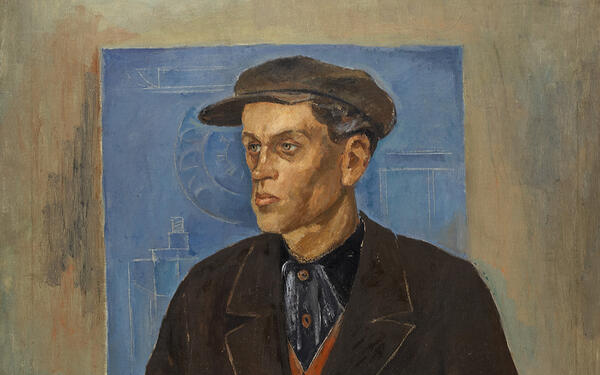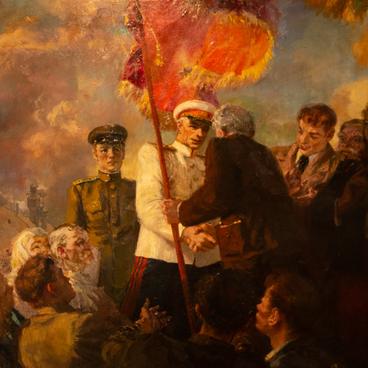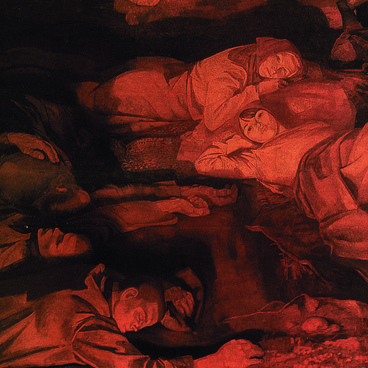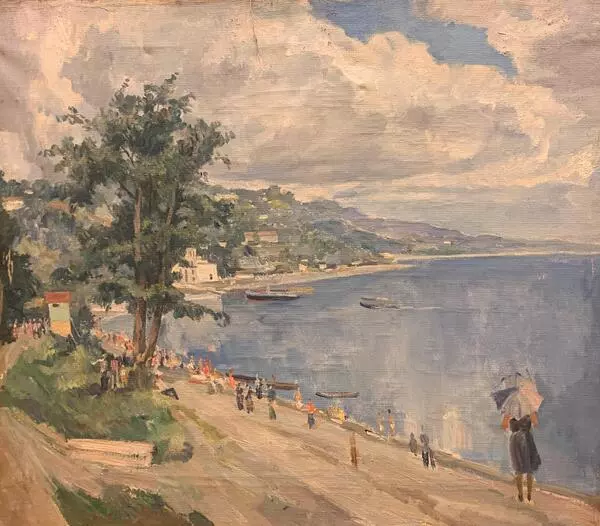Amshey Nurenberg met the person portrayed in this painting during a creative trip to the Southern Ural area. He depicted the shock worker Fyodor Makarov, who worked at the Zlatoust mechanical plant named after Vladimir Lenin.
As of today, art experts have found four paintings depicting the plant’s workers, and the museum collection houses them all. The canvases “Abramov — Best Shock Worker of the Forge Shop”, “Volokitina — Best Shock Worker of the Shop named after Mikhail Frunze”, “Kalman — Best Shock Worker of the Rolling Shop”, and “Shock Worker and Inventor Makarov” celebrate the best workers’ achievements in production.
The last painting is of particular interest. The artist portrayed Fyodor Makarov in the engineer’s office: a blueprint can be seen on the wall behind him, and there are notes, a ruler, and a calculator lying on the table. Makarov’s serious and thoughtful gaze goes beyond the canvas. In the 1930s, the image of an intellectual thinker from a working-class environment seemed entirely new, so portraits like this were rare.
Fyodor Makarov was indeed a thinker and experimenter, as well as the inventor of a certain device. Nadezhda Glybovskaya, a writer for the oldest newspaper ‘Zlatoustovsky Rabochiy’ (Zlatoust worker), did some research to find out what kind of device Makarov had invented and found the following words in Nikolay Verzakov’s book:
As of today, art experts have found four paintings depicting the plant’s workers, and the museum collection houses them all. The canvases “Abramov — Best Shock Worker of the Forge Shop”, “Volokitina — Best Shock Worker of the Shop named after Mikhail Frunze”, “Kalman — Best Shock Worker of the Rolling Shop”, and “Shock Worker and Inventor Makarov” celebrate the best workers’ achievements in production.
The last painting is of particular interest. The artist portrayed Fyodor Makarov in the engineer’s office: a blueprint can be seen on the wall behind him, and there are notes, a ruler, and a calculator lying on the table. Makarov’s serious and thoughtful gaze goes beyond the canvas. In the 1930s, the image of an intellectual thinker from a working-class environment seemed entirely new, so portraits like this were rare.
Fyodor Makarov was indeed a thinker and experimenter, as well as the inventor of a certain device. Nadezhda Glybovskaya, a writer for the oldest newspaper ‘Zlatoustovsky Rabochiy’ (Zlatoust worker), did some research to find out what kind of device Makarov had invented and found the following words in Nikolay Verzakov’s book:




